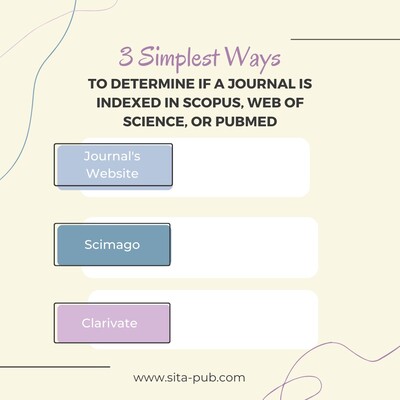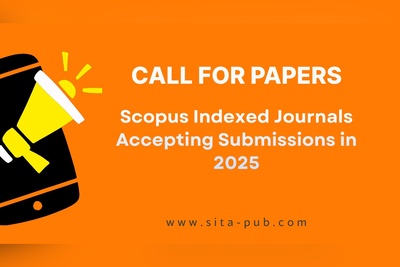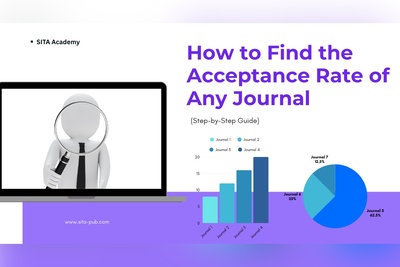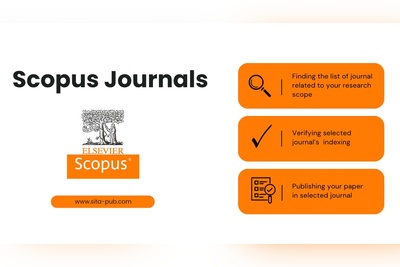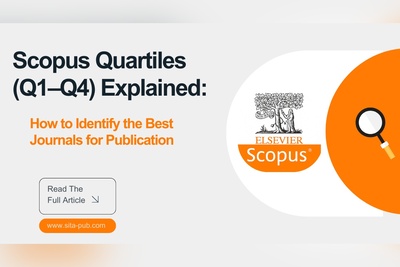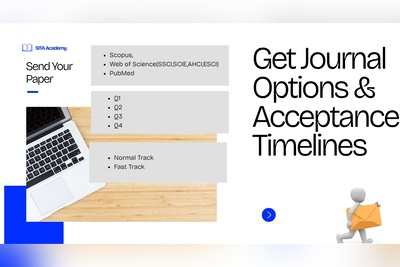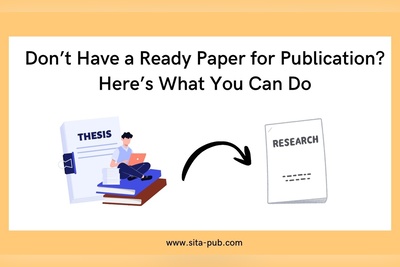Match Your Manuscript with the Right Journal in 5 Minutes
Want your research published in the right journal? Discover how journal selection strategies can help you target top journals in Scopus and Web of Science in minutes.
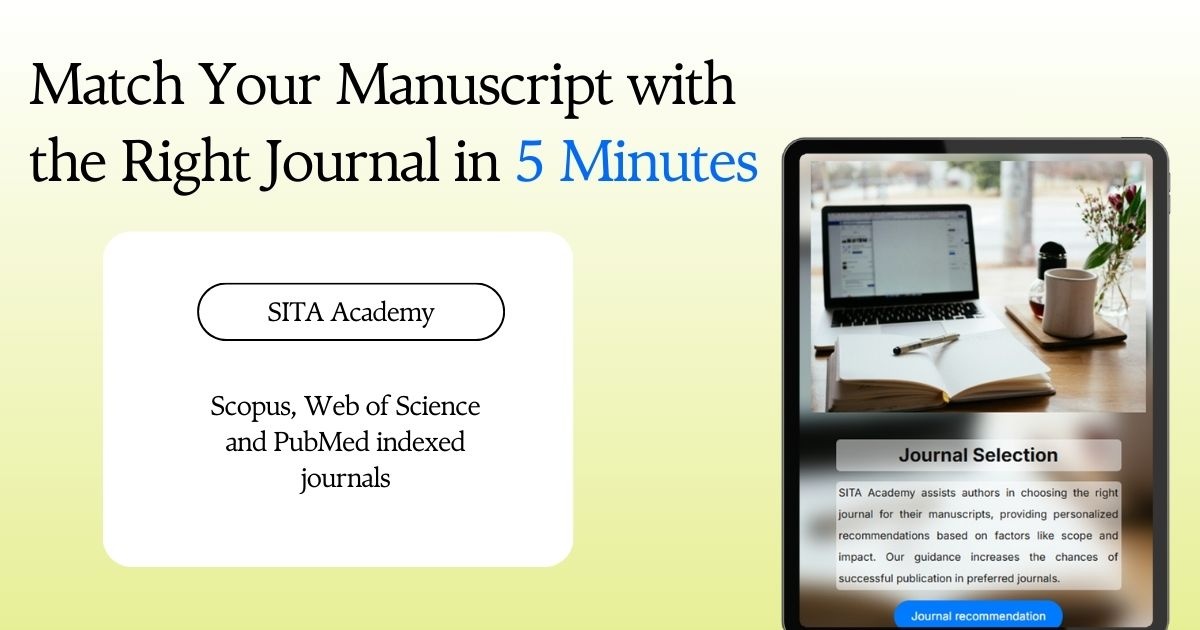
Many researchers find themselves overwhelmed by the sheer number of journals available and unsure which ones are most suitable for their manuscripts. Choosing the wrong journal can lead to rejections, wasted time, and lost opportunities.
In this guide, we’ll show you how to match your manuscript to the perfect journal in just 5 minutes, providing a simple, step-by-step process. By the end, you’ll understand how to quickly identify suitable journals and also learn about professional support options to make this process even easier and more effective.
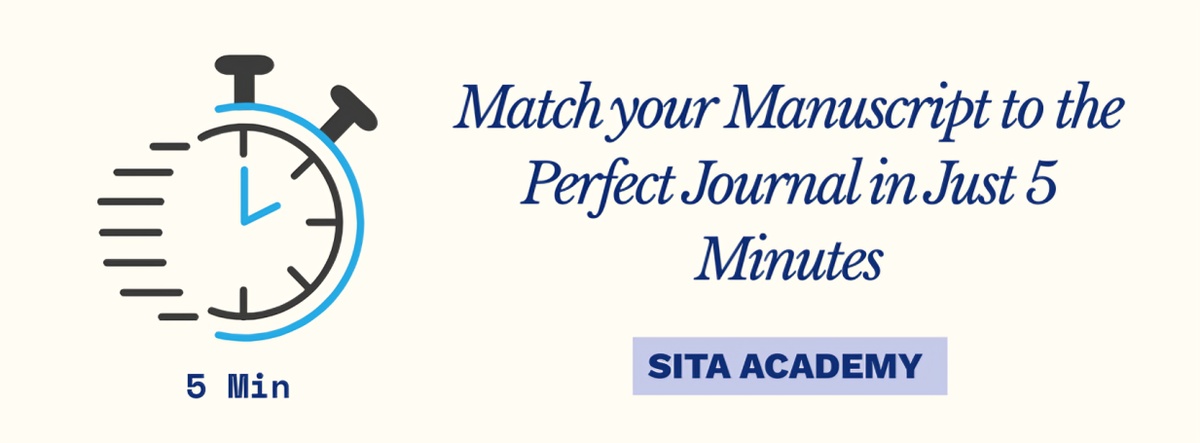
Step 1: Understand Your Manuscript
Before searching for journals, it’s essential to clarify the type, scope, and target audience of your manuscript. This foundational step saves time and ensures you’re only considering journals that are a good fit.
Ask yourself the following questions:
What type of manuscript do I have? Is it original research, a systematic review, a scoping review, a case study, or a short communication?
Which discipline or subfield does my research belong to? Narrowing this down ensures you target journals that regularly publish similar topics.
Who is my target audience? Are you writing primarily for other researchers, industry professionals, policymakers, or interdisciplinary readers?
By clarifying these points, you immediately eliminate journals that do not align with your manuscript type, scope, or audience. This step alone can cut down your journal search time significantly, making it realistic to find a suitable journal in just a few minutes.
Step 2: Identify Your Keywords
After understanding your manuscript, the next step is to list the main keywords and phrases that describe your research accurately. Keywords are crucial for identifying journals that focus on your subject area.
For example, if your manuscript explores “Artificial Intelligence in Healthcare”, your keywords might include:
Machine Learning
Medical AI
Predictive Analytics
Health Informatics
Neural Networks
These keywords serve two purposes:
They help you search online journal databases efficiently. Tools like Scopus, Web of Science, Elsevier Journal Finder, and Springer Journal Suggester allow you to enter these keywords to find journals that publish research in your area.
They help you communicate the focus of your manuscript clearly to journals and editors. A well-chosen set of keywords ensures your research reaches the right audience and increases the chance of acceptance.
Spending a few minutes on a focused list of keywords sets the stage for a quick, precise journal search.
Step 3: Use Journal Search Tools
Several online journal search tools allow you to generate a shortlist of journals in minutes. These tools use your title, abstract, and keywords to recommend journals that fit your manuscript:
Scopus Journal Finder: Enter your title or abstract, and it suggests journals indexed in Scopus that are a good match.
Web of Science Master Journal List: Filter journals by subject area, indexing status, and impact factor to identify high-quality options.
Elsevier Journal Finder: Matches your manuscript with Elsevier journals based on keywords and abstracts.
Springer Journal Suggester: Suggests Springer journals relevant to your topic.
Using these tools, you can generate a shortlist of potential journals within minutes, eliminating the need to manually search dozens of websites. The combination of clear keywords and specialized tools ensures the process is fast and accurate.
Tip: Focus on 2–5 journals that closely match your manuscript’s topic. Too many options can create decision fatigue, while too few may limit your choices.
Step 4: Check Scope, Audience, and Metrics
Once you have a shortlist, it’s essential to evaluate each journal carefully. Here are the key factors to consider:
Scope – Does your manuscript align with the journal’s main topics and subject areas? Journals often provide a detailed “Aims and Scope” section on their websites. Assessing Journal Scope will help you in Finding the Right Fit for Your Research.
Audience – Who typically reads this journal? Make sure the readers are your intended audience to maximize impact and visibility.
Article Types – Ensure the journal accepts the type of manuscript you have (e.g., original research, review, case study).
Metrics and Reputation – Consider the journal’s impact factor, h-index, or other relevant citation metrics. Check whether it’s indexed in Scopus, Web of Science, or PubMed.
Acceptance Rate and Review Time – Some journals are highly selective with long review cycles; others offer faster publication.
Evaluating these factors ensures your manuscript is submitted to journals where it is likely to fit, be read, and cited. This step also prevents wasted time on journals that aren’t a good match.
Step 5: Review Submission Guidelines
Before submitting, it’s critical to review the journal’s submission guidelines carefully. These guidelines often cover:
Formatting requirements for text, tables, figures, and references
Word count limits and section requirements
Ethics policies, conflict of interest disclosures, and data availability statements
Submitting a manuscript that doesn’t follow the guidelines can result in immediate rejection, even if your research is high quality. By taking a few minutes to review these requirements upfront, you can avoid unnecessary delays and increase your chances of acceptance.
Step 6: Make Your Selection
After completing the steps above, you should have 2–3 journals that are an ideal match. Compare them based on:
Fit with your manuscript’s topic
Audience relevance
Metrics and reputation
Time to publication and open access options
Choose the journal that aligns best with your goals. This is the journal where your research is most likely to be accepted and reach the right audience.
Step 7: Optional – Get Professional Assistance
While these steps can help you find a suitable journal quickly, many researchers prefer professional support to save time and ensure accuracy.
At SITA Academy, our Journal Recommendation Services provide:
Manuscript Analysis – We review your paper and determine the most suitable journals based on topic, scope, and quality.
Indexing and Metrics Assessment – We consider Scopus, Web of Science, and other indexing criteria, as well as impact factors, to recommend journals that maximize visibility and credibility.
Personalized Recommendations – You receive a clear, prioritized list of journals that are likely to accept your manuscript and reach your target audience.
Why this is beneficial for you:
Saves time – You don’t have to spend hours searching or evaluating journals.
Increases chances of acceptance – We match your manuscript to journals where it fits best.
Maximizes research impact – Choosing the right journal ensures your work reaches the right audience and gets cited.
Reduces stress – Focus on your research while experts handle the journal selection process.
By leveraging SITA Academy’s services, you can turn a 5-minute self-search into a strategic publication decision, ensuring your research reaches the right journal efficiently.
7 Steps to Identify the Best Journal for Your Research
Step | Action | Purpose / Benefit |
Understand Your Manuscript | Clarify type, scope, and target audience | Focus on journals that fit your manuscript, saving time |
Identify Keywords | List 5–10 main keywords | Helps search journal databases efficiently and reach the right audience |
Use Journal Search Tools | Use tools like Scopus Journal Finder, Web of Science, Elsevier, Springer | Generate a shortlist of suitable journals quickly |
Check Scope, Audience, and Metrics | Review journal aims, audience, article types, indexing, and impact | Ensure the journal aligns with your research and increases acceptance chances |
Review Submission Guidelines | Check formatting, word count, ethics, and data policies | Avoid technical rejection and save time during submission |
Make Your Selection | Compare shortlisted journals and choose the best fit | Select the journal most likely to accept your work and reach your audience |
Optional – Professional Assistance | Use SITA Academy’s Journal Recommendation Services | Save time, reduce stress, maximize research impact, and improve acceptance chances |
Conclusion
Finding the right journal doesn’t have to take weeks or months. By following this 5-minute guide, you can:
Identify journals that match your manuscript’s topic
Ensure your paper meets audience and scope requirements
Maximize visibility, impact, and likelihood of acceptance
Verified Contact Channels
If you have any questions, inquiries, or would like to learn more about our services, please don't hesitate to reach out to us. Our dedicated team is ready to assist you.
